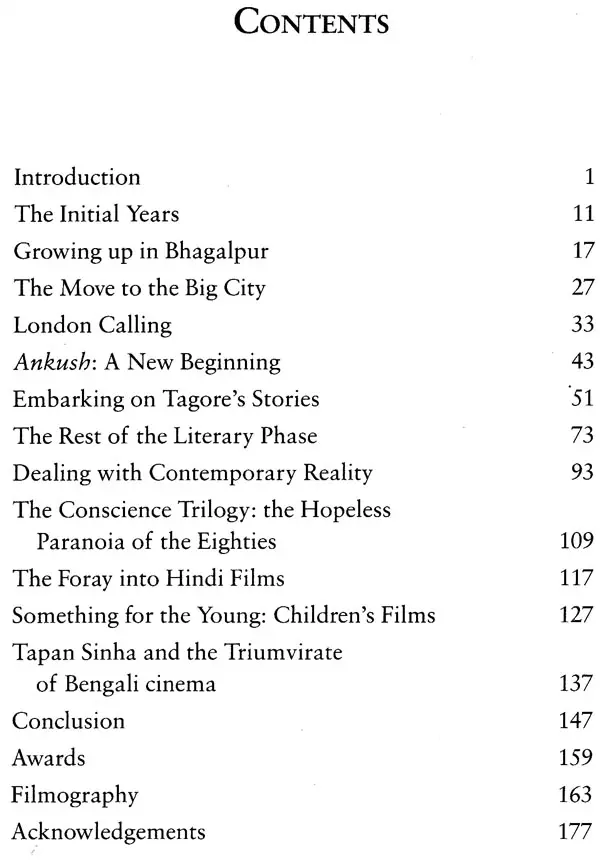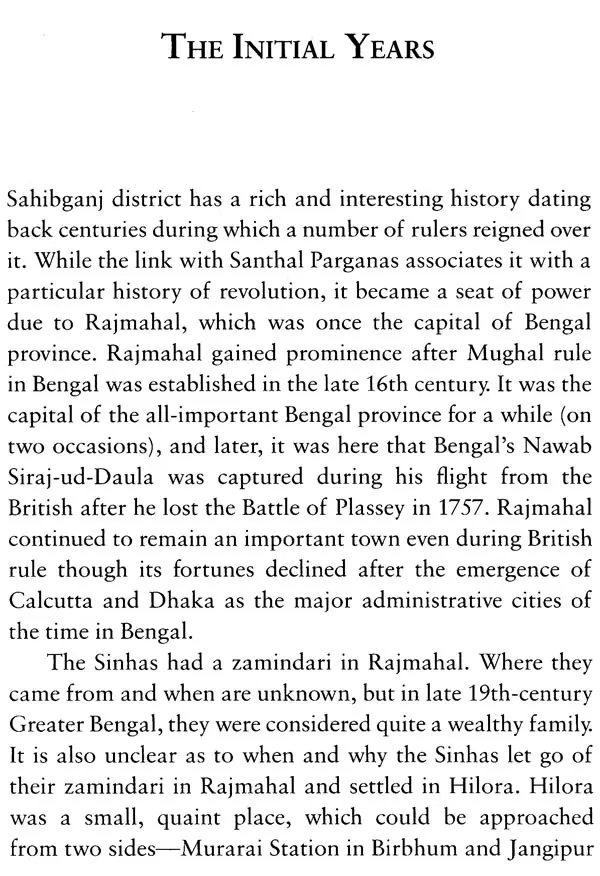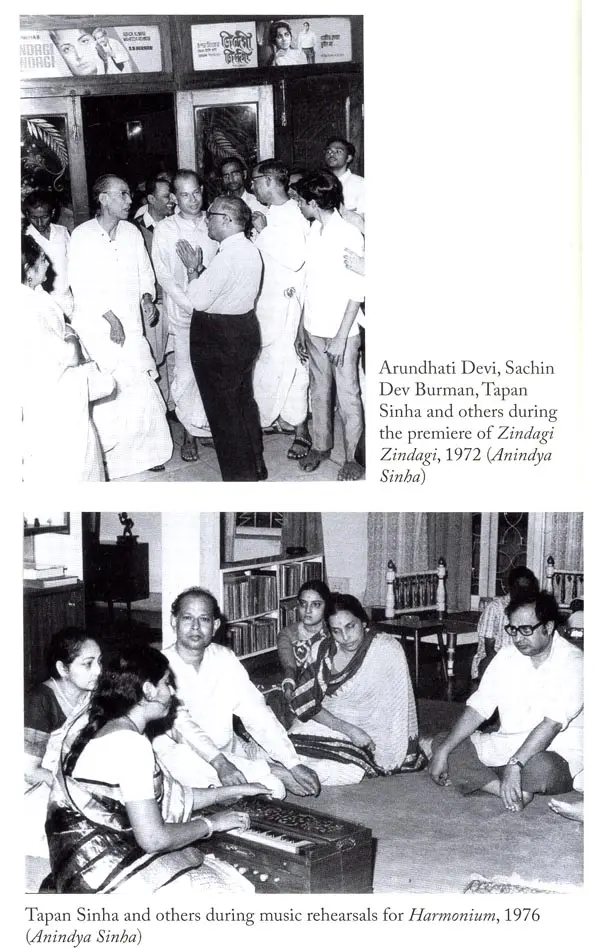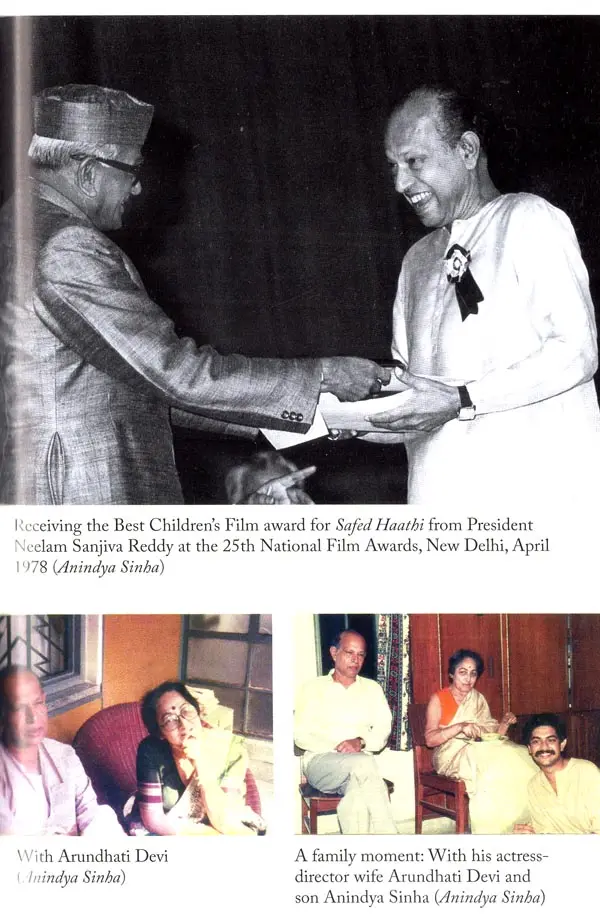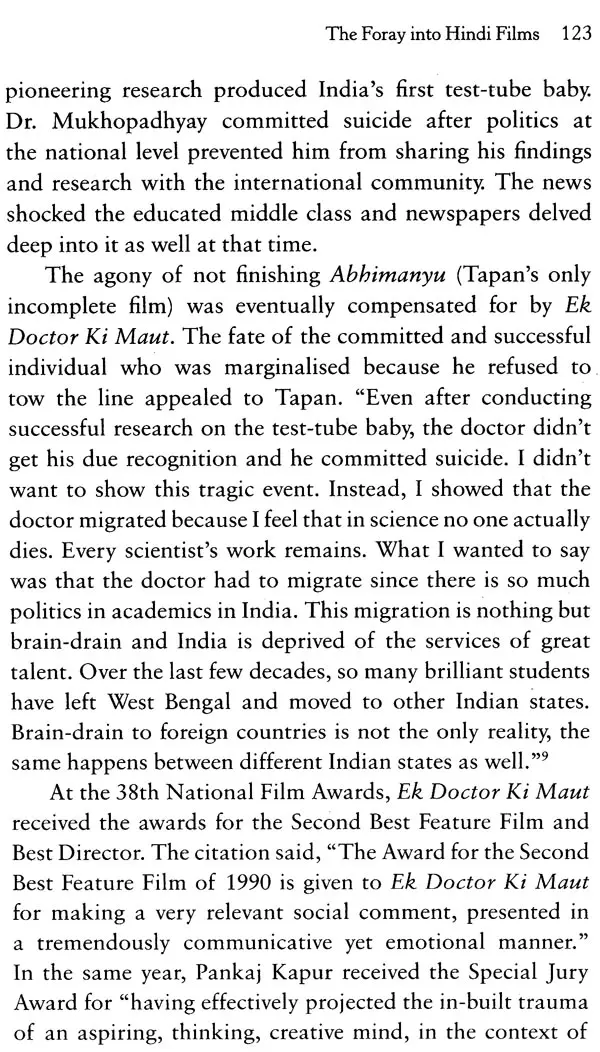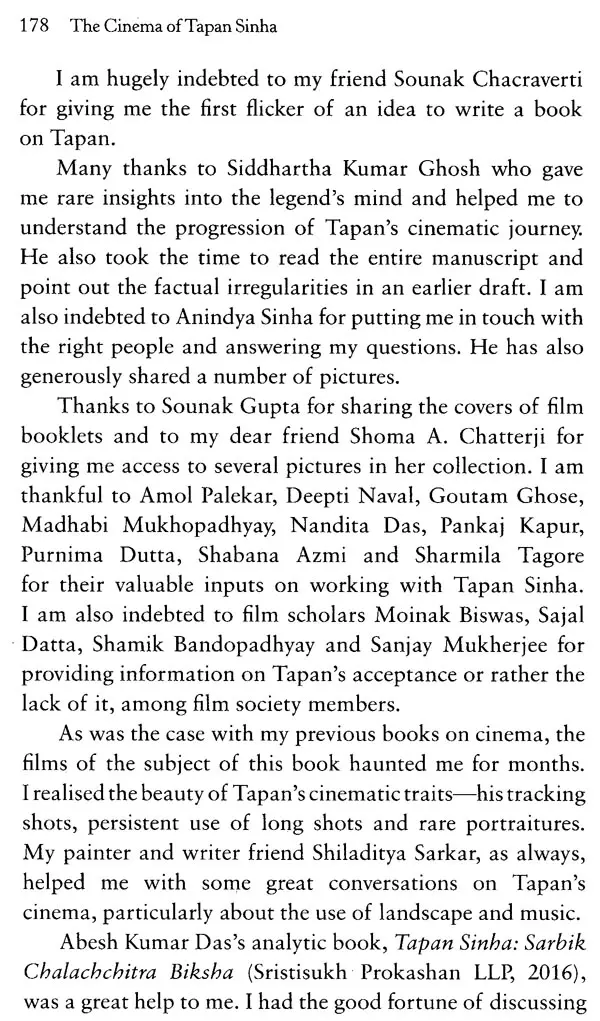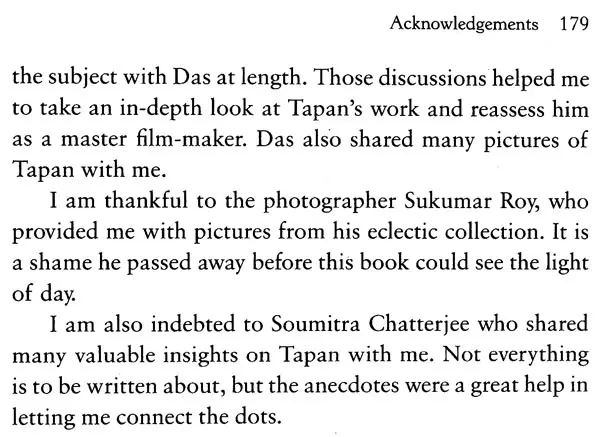About the Book Most serious discussions on Bengali cinema start and end with the holy trinity of Satyajit Ray, Ritwik Ghatak and Mrinal Sen. However, no other film-maker in Bengali cinema has bridged the world of high art with box-office success like Tapan Sinha. His cinema serves as the indelible link between the famed troika and their less-celebrated compatriots including Ajoy Kar, Asit Sen, Tarun Majumdar and a few others.
Be it classic literary adaptations, satires, swashbucklers, or contemporary social critiques, Sinha addressed diverse genres in his films, expanding the boundaries of cinema within the realm of conventional, narrative storytelling. In their subtle experimentation, their exploration of the various strands of human life, and the belief in the ultimate nobility of the human soul, his films hold a unique mirror to life itself.
Amitava Nag's book provides a succinct introduction to the cinema of Tapan Sinha and the significant place he holds in Bengali and, indeed, Indian cinema. With characteristic erudition, the author explores Sinha's deep roots in the Bengali cultural climate, mainly music and literature, and how they shaped his cinematic storytelling. For anyone interested in understanding the works of an underrated and often-neglected auteur, The Cinema of Tapan Sinha is the perfect place to start.
About the Author AMITAVA NAG is an independent film critic based in Kolkata, and editor of Silhouette (www.silhouettemagazine.com). His most recent books on cinema are Murmurs: Silent Steals with Soumitra Chatterjee, 16 Frames and Smriti Satta o Cinema. His earlier writings include the acclaimed books Satyajit Ray's Heroes and Heroines and Beyond Apu: 20 Favourite Film Roles of Soumitra Chatterjee.
Amitava also writes poetry and short fiction in Bengali and English. His poetry collection Forever Meera and translation anthology of Soumitra Chatterjee's English poems titled Walking Through the Mist were published in 2020. He can be reached at www.amitavanag.net
Introduction Like with most young middle-class boys growing up in the late seventies and early eighties, cinema exerted its disarming charm on me. The larger-than-life projections on huge screens in dark cinema halls left an indelible impression, which will never be matched by the experience of watching films on digital devices like laptops, mobile telephones or modern high-definition TVs. I was brought up in an academic environment with no television at home, and cinema was a restricted entertainment for both me and my sister. Among the few films we were allowed to watch at the cinema hall at an early age was one with a white elephant named Airavat in it. We were familiar with Airavat, the mythological white elephant who is said to have carried Indra, King of the Gods, on his back. We were fascinated by the stories about Airavat, his conquests and stature as the king of all elephants. To our surprise, the Airavat in the film was a far cry from that mythological creature. Nonetheless, we loved him immensely and Safed Haathi (The White Elephant, 1978) remained my favourite film for a long time. Sibu, the film's protagonist who must have been the same age as us at that time, became our role model.
Book's Contents and Sample Pages
